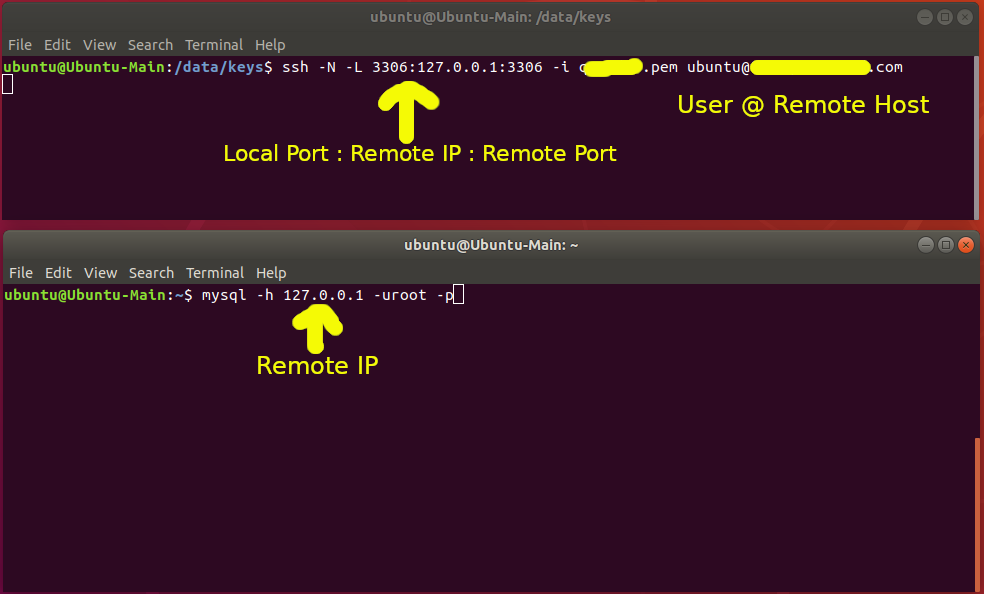

- #Ssh tunnel manager http proxy from command line how to
- #Ssh tunnel manager http proxy from command line full
- #Ssh tunnel manager http proxy from command line password
Private static final String CHANNEL_TYPE = "shell" Private static final String STRICT_HOST_KEY_CHECKING_VALUE = "no" Private static final String STRICT_HOST_KEY_CHECKING_KEY = "StrictHostKe圜hecking" Static final Logger logger = Logger.getLogger(App.class) * ssh -i ssh-key.pem Where the `ssh-key.pem` is the ssh key file for each. * ssh -i ssh-key.pem And then from the JUMP_BOX the REMOTE_SERVER should be reachable via:
#Ssh tunnel manager http proxy from command line full
The code is available on Github as a full maven project: The values set between `BEGIN required customization` and `END required customization` will need to be customized to match your settings. It should be noted that there are other tools available for deployments, such as Jenkins, that maybe a better fit for some use cases. It is procedural proof of concept and could be refactored into more reusable, modular classes.

The code below is part of an example application to automate deployments implemented in Java. The Jsch project does have some examples available, but as mentioned, I didn’t find a jump box example.

I would like to the thank the authors of Jsch for their work and making it available and updated. The code below uses the JSch library, to make the ssh connections. Using the command line will work for many solutions, but is not ideal if you are trying to automate steps as part of an application. Ssh -i INTERNAL_SERVER_KEY_FILE.pem -L 8080:127.0.0.1:8080 The INTERNAL_SERVER_KEY_FILE.pem needs to be the key file (and prepended path) on the JUMP_BOX server
#Ssh tunnel manager http proxy from command line password
It is also possible to use keys so that there are no password prompts: ssh -t -i JUMP_BOX_KEY_FILE.pem -L 8080:127.0.0.1:8080 \

Using SSH to chain the connections together to create a tunnel using command line parameters looks like this: ssh -t -L 8080:127.0.0.1:8080 ssh -L 8080:127.0.0.1:8080 this example localhost 8080 is connected to JUMP_BOX 8080 which is then connected to REMOTE_SERVER 8080. For that scenario, simply replace 8080 with 3306. This would allow connection to the remove database over the localhost 3306 port. blocked by forwarding rules or proxy settings).Īnother example might be to map 3306 from localhost to a remote MySQL database. Specifically, this is the Apache Tomcat Manager webapp on the remote server, normally not available to the Internet for security reasons (e.g. In this example, there is a webapp on port 8080 on the remote server that we want to make available on localhost 8080. This is security setup is often seen on cloud hosting providers like Amazon Web Services EC2 (AWS) or Microsoft Azure. It means the remote server can limit what ports are open to the internet and user access control can be managed on the jump box. It requires users to first SSH to the jump box and then SSH to the remote server. IntroductionĪ jump box (or bastion host) is a common security setup for servers. The code below supports 2 hops, but in theory could be used to support any number of hops. Allowing a connection to the remote server port as if it was a localhost port.Įxamples found online provided only one ‘hop’, not the double ‘hop’ needed.
#Ssh tunnel manager http proxy from command line how to
How to create a SSH tunnel in a Java app from a localhost port through a jump box to a specific port on a server.


 0 kommentar(er)
0 kommentar(er)
